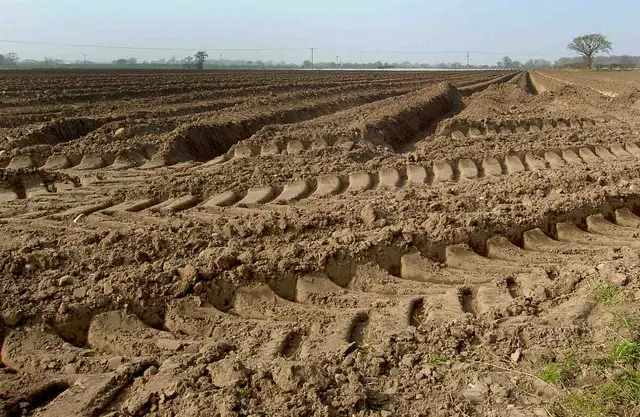If you’ve been struggling with maintaining a lush, green lawn on sandy soil, you’re not alone. Many homeowners face challenges when it comes to nurturing grass in this type of soil. However, with the right strategies and techniques, you can transform your sandy soil into a thriving and beautiful lawn that you can be proud of. In this guide, we will walk you through step-by-step instructions, providing valuable insights and expert tips to help you achieve the lawn of your dreams.
Understanding Sandy Soil
Before we dive into the specifics of growing grass in sandy soil, let’s take a moment to understand the characteristics of sandy soil. Sandy soil is known for its gritty texture and larger particles. While it offers good drainage, it can struggle to retain water and nutrients, which are essential for healthy grass growth. However, with proper care, you can overcome these challenges and create an environment where grass can flourish.
Selecting the Right Grass Varieties
The first step in successfully growing grass in sandy soil is selecting the right grass varieties. Not all grass types are well-suited for sandy soil conditions. Opt for grass varieties that are known for their drought resistance and ability to thrive in well-draining soils. Some excellent choices include Bermuda grass, Zoysia grass, and Buffalo grass. These grasses have adapted to sandy soil and can withstand the challenges it presents.
Soil Preparation and Amendments
Preparing your sandy soil is crucial to providing a solid foundation for your grass to grow. Start by testing your soil’s pH levels to determine its acidity or alkalinity. Based on the results, you may need to amend the soil with lime or sulfur to achieve the optimal pH range for grass growth. Additionally, incorporating organic matter such as compost or well-rotted manure can significantly improve the soil’s water retention and nutrient-holding capacity.
Proper Irrigation Techniques
Effective irrigation is essential for nurturing grass in sandy soil. Since sandy soil drains quickly, you’ll need to water more frequently, but in shorter durations. Deep, infrequent watering sessions allow the water to reach the grass’s root zone, promoting healthy root development. Consider using a soaker hose or drip irrigation system to ensure even water distribution and minimize water wastage.
Fertilization and Nutrient Management
Sandy soil has a tendency to leach nutrients, which can impact grass growth. Regular fertilization is key to supplying the necessary nutrients for your grass to thrive. Opt for a balanced, slow-release fertilizer with a higher phosphorus content to encourage strong root growth. Applying organic fertilizers can also enhance the soil structure over time, improving its water and nutrient-holding capabilities.
Mulching for Soil Health
Mulching is a valuable practice that can greatly benefit grass growth in sandy soil. Apply a layer of organic mulch, such as straw or wood chips, to the soil’s surface. Mulch helps conserve soil moisture, regulate soil temperature, and prevent weed growth. As the mulch breaks down, it enriches the soil with organic matter, further enhancing its overall quality.
Mowing and Maintenance
Proper mowing and maintenance play a vital role in the health of your grass. Set your mower to a higher cutting height to shade the soil and reduce water evaporation. Be sure to keep your mower blades sharp to achieve clean cuts and minimize stress on the grass. Regularly remove any thatch buildup, as this can impede water penetration and nutrient absorption.
Monitoring and Adjustments
Constant monitoring of your lawn’s condition is essential for making timely adjustments. Keep an eye out for signs of stress, such as wilting or discoloration. Adjust your watering schedule and practices based on seasonal changes and the specific needs of your grass type. Regular aeration can also alleviate compaction and improve water infiltration in sandy soil.
Frequently Asked Questions (FAQ)
1. Can I grow any type of grass in sandy soil?
While not all grass varieties thrive in sandy soil, there are specific types, such as Bermuda grass, Zoysia grass, and Buffalo grass, that are well-suited for these conditions. These grasses have adapted to sandy soil and can flourish with the right care.
2. How often should I water my grass in sandy soil?
Sandy soil drains quickly, so you’ll need to water more frequently than in other soil types. Aim for deep, infrequent watering sessions to ensure proper root development. Consider using a soaker hose or drip irrigation system for efficient water distribution.
3. Is fertilization necessary for grass in sandy soil?
Yes, fertilization is crucial for supplying the nutrients that sandy soil tends to leach. Choose a balanced, slow-release fertilizer with higher phosphorus content to promote strong root growth. Organic fertilizers can also improve the soil’s overall quality over time.
4. Can I use mulch on sandy soil?
Absolutely. Applying organic mulch, such as straw or wood chips, to the soil’s surface can help conserve moisture, regulate temperature, and prevent weed growth. As the mulch breaks down, it enriches the soil with valuable organic matter.
5. How do I know if my grass is stressed in sandy soil?
Watch for signs of stress, including wilting, discoloration, or slow growth. Regular monitoring allows you to make timely adjustments to your watering and maintenance practices.
Conclusion
Growing grass in sandy soil may present its challenges, but with the right knowledge and strategies, you can create a stunning and vibrant lawn. By selecting appropriate grass varieties, amending the soil, implementing proper irrigation techniques, and providing adequate nutrients, you can overcome sandy soil’s limitations and achieve a thriving lawn that enhances your outdoor space.
Remember, successful lawn care is an ongoing process that requires dedication and attention to detail. By following the steps outlined in this guide and referring to our FAQ section, you’ll be well on your way to transforming your sandy soil into a lush and inviting landscape that you can enjoy for years to come.






